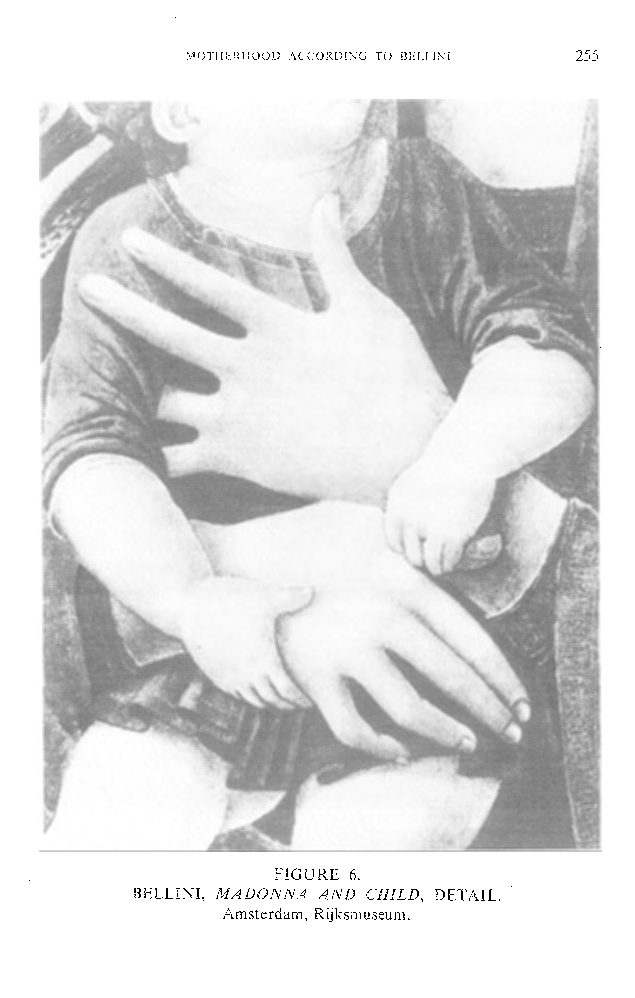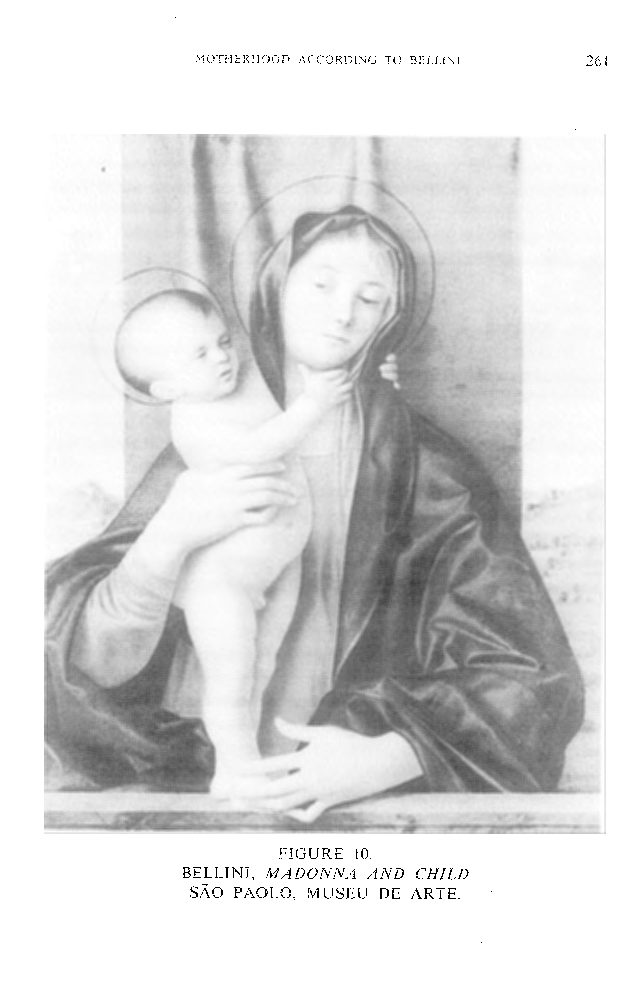Share this Collection
1 Citation in this Annotation:
Annotated by:
Fiona Hatz on Motherhood according to Giovanni Bellini
22 April, 2022
Julia Kristeva analyses Giovanni Bellini’s work as a representation of successive stages in his processing of the absence of a mother figure in his childhood. By linking the evolution of Bellini’s art to the theme of motherhood, she provides a different perspective on the establishment of the Venetian Renaissance. At a time where a prevailing Byzantine influence intersected with ideas of continental humanism, the new ideas were accompanied by a shift in style of paintings. Kristeva relativizes the influence of the cultural shift on Bellini’s art, by shedding light on the interconnections between personal and cultural influences.
Changes in composition and style are linked to a gradual reconciliation to the absent mother. The depiction of the Madonna in relation to the child is considered symbolic to the artist’s relation to his own mother. This interpretation emphasizes the fact that the depiction of women in paintings was a result of how men related to them. Rather than representing a real person, the Madonna serves as a symbol and an object of desire.
Earlier paintings of the Madonna and child, describe the relationship as very distant, even threatening and the mother figure is the central motive of the picture. In later paintings, the maternal figure seems to become only an element of the painting, serving as a layer in the foreground while the area around her opens to another spatiality. The representation of architectural spaces and landscapes are also part of Kristeva’s analysis. According to Freud, it is not what we encounter but rather the place or context where we encounter something that evokes a feeling[1]. As the figure of the Madonna is placed in different architectural and landscape settings, she is reduced to a symbolic device, evoking feelings of desire or repression.
What struck me when reading Kristeva’s text was how the paintings seem to represent anyone but the woman herself. The new humanist way of depicting bodies, (accompanied by expectations on how they are supposed to look), as well as the individual relations of observers and painters, rather than the contemporary women themselves, seem to be determining the female image of the time.
[1] Freud, “The uncanny”, p.249

